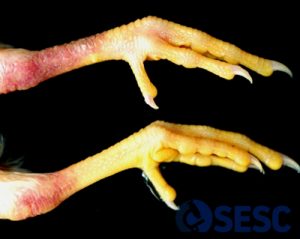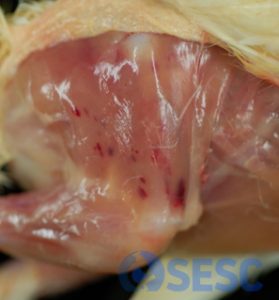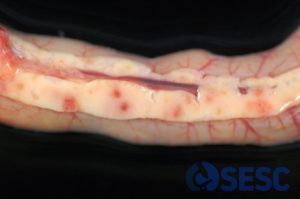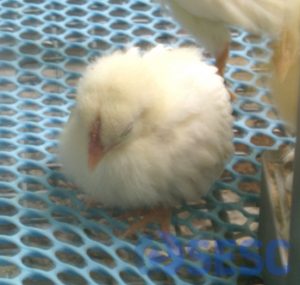Can avian flu be found at the slaughterhouse?
An outbreak of highly pathogenic avian influenza (HPAI) has been confirmed for the first time in six years in Catalonia, in a turkey farm. Despite having carried out the established control measures (sacrifice in nearby farms and a 3km radius of surveillance), the possibility of new outbreaks exists, and therefore all professionals in the poultry sector need to be on the lookout. HPAI is usually an acute disease with high mortality, and therefore its detection at the slaughterhouse is highly unlikely. Anserifomr birds (ducks, goose) are usually asymptmatic. Just in case, we want to review the clinical and pathological characteristics of this disease.
First, regarding the clinical signs (ante-mortem examination):
- Increased mortality during transport
- Severe depression, prostration
- Lack of coordination, opisthotonos, pedaling
- Facial edema
- Cyanotic/haemorrhagic combs, chins and legs
It should be noted that the lesions resulting from HPAI infection are acute and, therefore, they are most often found in animals that are acutely ill and not in slaughtered animals. They usually consist of the following:
- Severe congestion or petechiae in the muscles
- Dehydration
- Subcutaneous edema of the head and neck
- Nasal and oral secretions
- Tracheal mucous exudation
- Petechiae in muscles, internal membranes, serous and abdominal fat and serous
- Renal congestion, sometimes with urate deposits in the tubules
- Haemorrhages in the mucosa of the proventriculus, especially at the junction with the gizzard
- Hemorrhages/focus of necrosis in the pancreas
- Haemorrhages and erosions of the mucous membrane of the gizzard
- Hemorrhagic foci in the lymphoid tissues of the intestinal mucosa
In case of suspicion, the diagnosis must be confirmed by molecular biology.
This disease must be declared following the specifications of the Individualized and Urgent Disease Declaration Procedure. In the protocol agreed with the DACC, in case of suspicion, it contemplates sampling 20 animals from the affected lot: 20 tracheal/oropharyngeal swabs + 20 cloacal swabs (dry or moistened with physiological serum) and sending them to the Poultry Health Center of Catalonia and Aragon (CESAC). To coordinate the collection of samples urgently, contact the official veterinary services of the DACC: salutanimal.daam@gencat.cat
As it is an RNA virus and given that it degrades easily, the samples must be sent as soon as possible after they are obtained and refrigerated (4ºC).
Finally, remember that although the risk is low, HPAI is potentially zoonotic, therefore, in case of suspicion, it is recommended to use gloves and protect the mucous membranes (FFP3 mask and glasses). (KB)

Limbs of a chicken affected by HPAI. Multifocal skin hemorrhages are observed in the metatarsal area.

Subcutaneous and muscular petechiae in a case of chicken affected by HPAI.

Pancreas. Generalized multifocal areas of reddish color are observed in the pancreas, which correspond to hemorrhages and necrosis.

Chicken affected by HPAI showing severe depression and lethargy.

